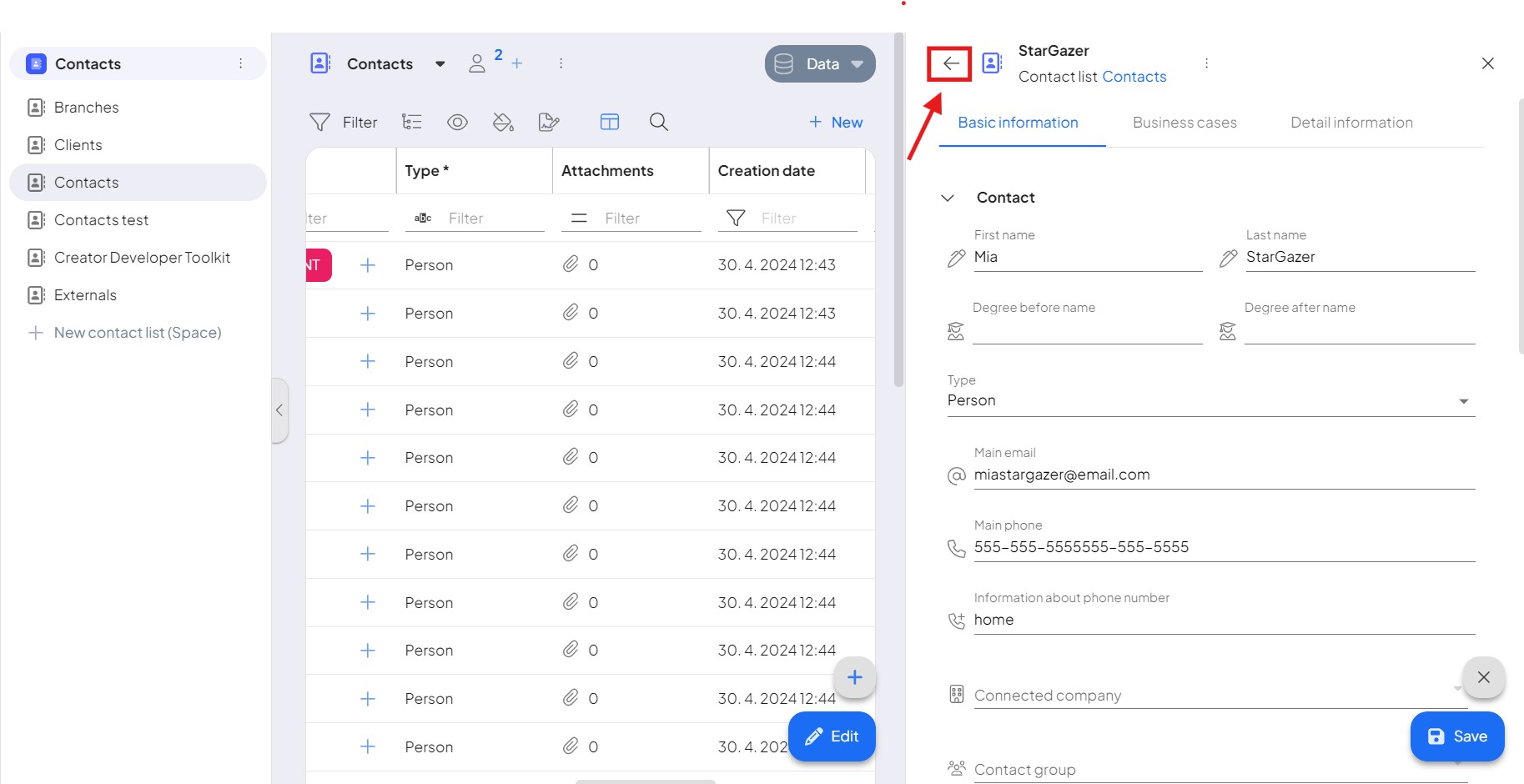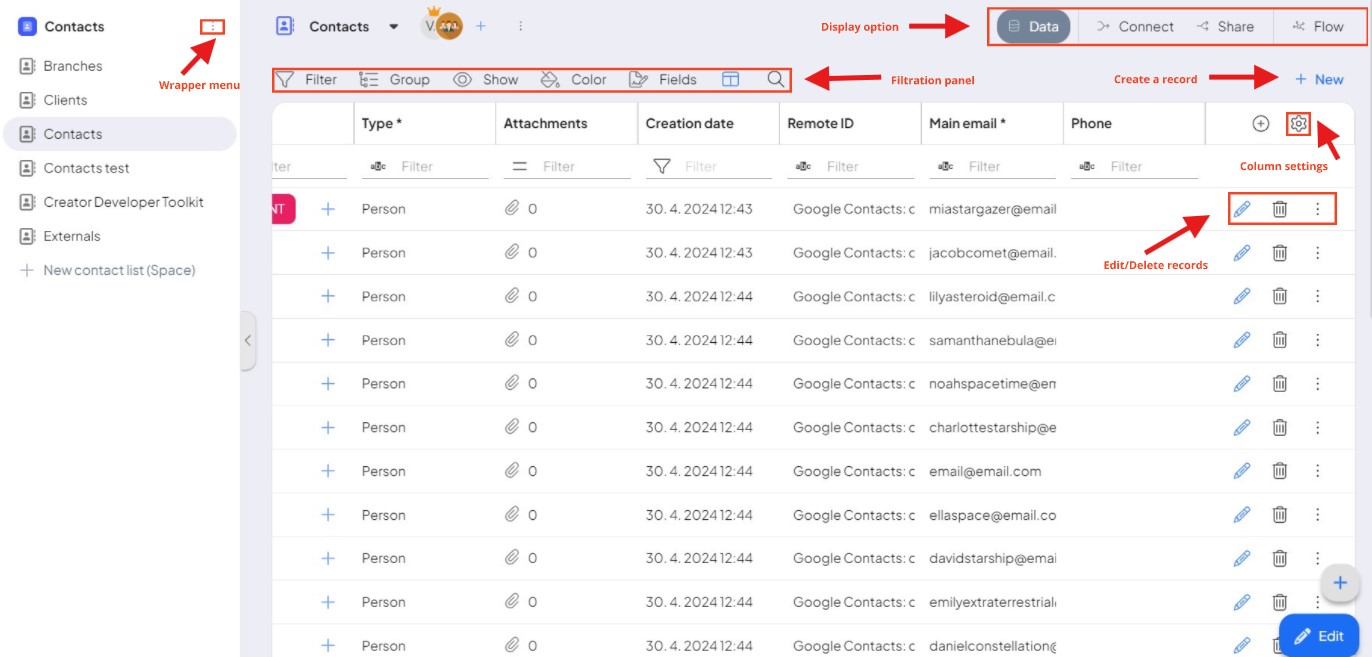Boost.space module navigation: Understanding the hierarchy and features of the System
The majority of the Boost.spaceA platform that centralizes and synchronizes company data from internal and external sources, offering a suite of modules and addons for project management, CRM, data visualization, and more. Has many features to optimize your workflow! modulesa module is an application or tool designed to handle specific business functions, such as CRM, project management, or inventory. The system's modular architecture allows you to activate only the modules you need, enabling customization and scalability as your business requirements evolve. are built on the same foundation, ensuring ease of use and clarity across all modules and their spaces or recordsIn Boost.space, a record is a single data entry within a module, like a row in a database. For example, a contact in the Contacts module or a task in the Tasks module..
Orientation in the hierarchy of the system
One level above
A button that returns the userCan use the system on a limited basis based on the rights assigned by the admin. to the level above (back).
SpacesIn Boost.space, a space is a subunit within a module that helps organize and categorize data, ensuring clarity even with large volumes. For example, within the Contacts module, you might have spaces like "Client Database" or "Supplier Database." Access to each space is restricted to users who have created it or have been granted access.

SpaceIn Boost.space, a space is a subunit within a module that helps organize and categorize data, ensuring clarity even with large volumes. For example, within the Contacts module, you might have spaces like "Client Database" or "Supplier Database." Access to each space is restricted to users who have created it or have been granted access. menu
Filter spaces inside the modulea module is an application or tool designed to handle specific business functions, such as CRM, project management, or inventory. The system's modular architecture allows you to activate only the modules you need, enabling customization and scalability as your business requirements evolve. by statusIn Boost.space, statuses are indicators assigned to records within modules to represent their current state or progress. They can be system-defined, such as "Active" or "Done," or custom-created to fit specific workflows. Statuses help track and manage tasks, projects, and processes efficiently. and create new spaces.
Navigation panel
Navigation across spaces within the module.
Navigation toolbar
Navigate across spaces within the currently selected space.
Spaces settings
The main spaces settings are displayed when one of the spaces is selected – in addition to setting and deleting spaces, it also contains logs of changes that have been made.
User settings
Managing usersCan use the system on a limited basis based on the rights assigned by the admin. assigned to a space – adding and removing users, including setting their rights.
Additional menu of a specific space
An additional menu of a specific space displayed when one of the spaces is selected – contains a button to delete the space.
Records

Creating a recordIn Boost.space, a record is a single data entry within a module, like a row in a database. For example, a contact in the Contacts module or a task in the Tasks module.
Button to create a record in the selected space.
List of records
All records according to the current selection – if no space is selected and no filter is applied, all records to which the user has access are displayed.
Filtration toolbar
Sorting and searching records. Under the funnel icon is a filter panel. Spaces containing filtered records are displayed in the navigation toolbar.
Editing a record
Button for displaying the record detail in which the record can be edited (after editing mode is enabled).
Column settings
Selection of columns that should be displayed in the list of records.
Deleting a record
Button for deleting a record.
Record listing pages
Orientation among a large number of records.
